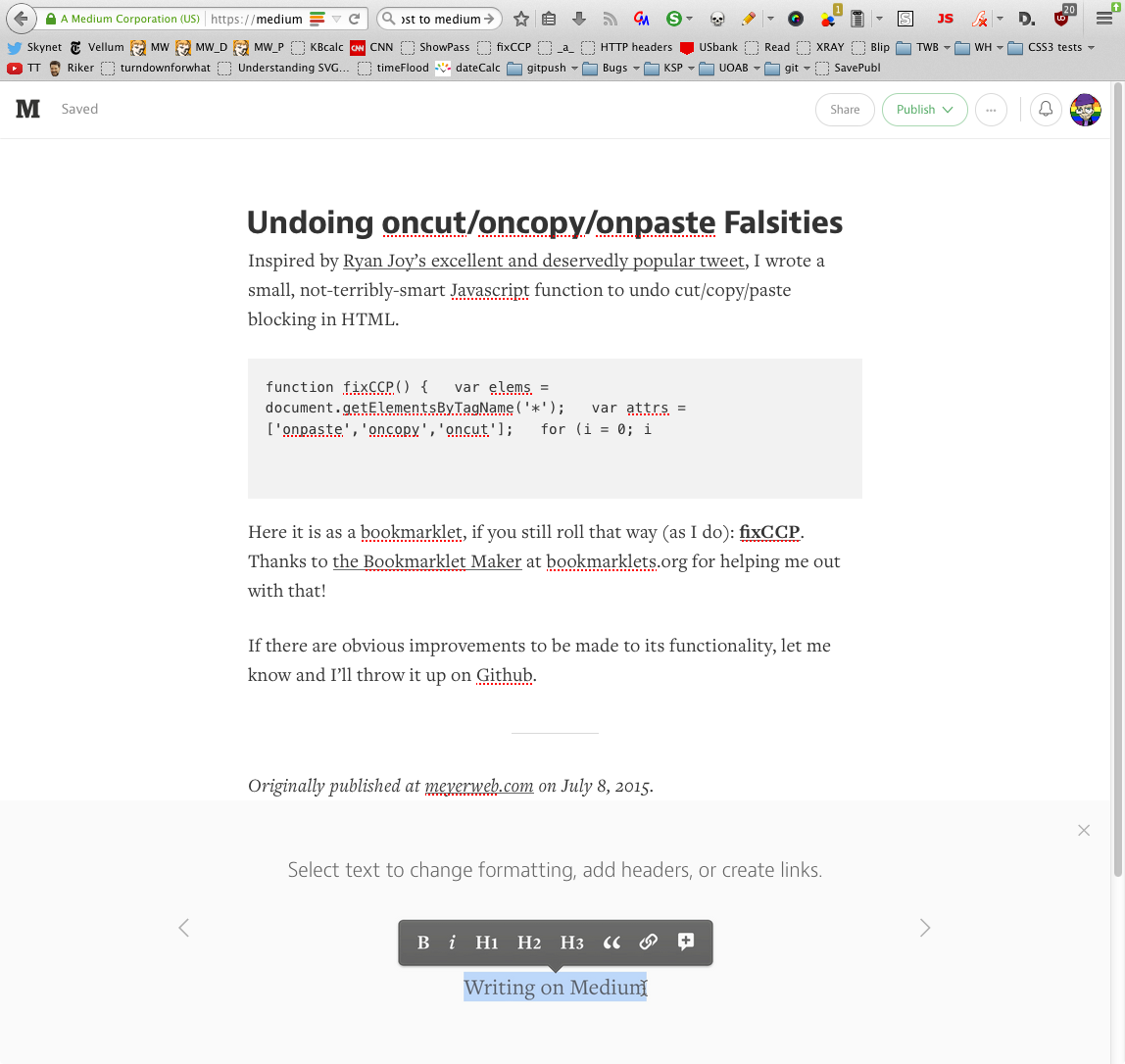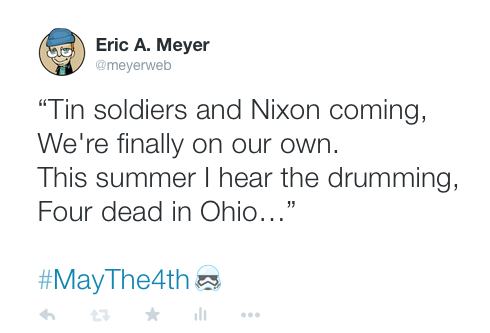Dislike
Published 10 years, 4 months pastFacebook is emotionally smarter than we give it credit for, though perhaps not as algorithmically smart as it could be.
I’ve been pondering this for a few weeks now, and Zeynep Tufekci’s “Facebook and the Tyranny of the ‘Like’ in a Difficult World” prodded me to consolidate my thoughts.
(Note: This is not about what Tufekci writes about, exactly, and is not meant as a rebuttal to her argument. I agree with her that post-ranking algorithms need to be smarter. I also believe there are design solutions needed to compensate for the unthinking nature of those algorithms, but that’s a topic for another time.)
Tufekci’s piece perfectly describes the asymmetrical nature of Facebook’s “engagement” mechanisms, commented on for years: there is no negative mirror for the “Like” button. As she says:
Of course he cannot like it. Nobody can. How could anyone like such an awful video?
What happens then to the video? Not much. It will mostly get ignored, because my social network has no way to signal to the algorithm that this is something they care about.
What I’ve been thinking of late is that the people in her network can comment as a way to signal their interest, caring, engagement, whatever you want to call it. When “Like” doesn’t fit, comments are all that’s left, and I think that’s appropriate.
In a situation like Tufekci describes, or any post that deals with the difficult side of life, comments are exactly what’s called for. Imagine if there were a “Dislike” button. How many would just click it without commenting? Before you answer that question, consider: how many click “Like” without commenting? How many more would use “Dislike” as a way to avoid dealing with the situation at hand?
When someone posts something difficult — about themselves, or someone they care about, or the state of the world — they are most likely seeking the support of their community. They’re asking to be heard. Comments fill that need. In an era of Likes and Faves and Stars and Hearts, a comment (usually) shows at least some measure of thought and consideration. It shows that the poster has been heard.
Many of those posts can be hard to respond to. I know, because many of the Facebook posts my wife and I were making two years (and one year) ago right now were doubtless incredibly hard to read. I remember many people leaving comments along the lines of, “I don’t know what to say, but I’m thinking of you all.” And even that probably felt awkward and insufficient to those who left such comments. Crisis and grief and fear in others can make us very uncomfortable. Pushing past that discomfort to say a few words is a huge show of support. It matters.
Adding “Dislike” would be a step backward, in terms of emotional intelligence. It could too easily rob people who post about the difficult parts of life of something they clearly seek.



